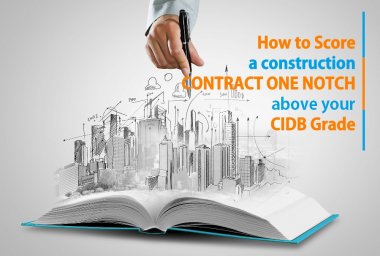-
AuthorFixonate Consulting
-
Comments0 Comments
-
Category
The NHBRC carries out 4 to 8 home inspections at each phase of the home building process.The whole objective of the home inspections, is to ensure that the home is built in line with its minimum building standards.These building standards can be found in references found within the home building manual that applicants receive when registering the National Home Builders Registration Council.
The manual references center around the SANS series, most importantly, the SANS Manual 10400, 10082, 10137 as well as 2001. These manuals go into deep details with each topic of the home building process such as floor spaces, roof angles, concrete mixes etc. Usually, the inspections are carried out by a home inspector, supervised by a quality assurer. The quality assurer is there to conduct an audit on the work performed by the home inspector.
Usually, before the initial visit, the quality assurer together with the home inspector, will load the approved municipal building plans together with the home inspections checklist loaded onto the NHBRC’s mobile app. They will also familiarize themselves with the site address before making their way. It is usually advisable for the home builder to be on site with the initial visit, however, it is not compulsory, as some home builders manage multiple building sites.
None the less, it is always advisable, to leave someone competent who will greet and introduce the NHBRC inspectors to the building site and show them around. It is usually advisable, never to start building prior to the initial site visit. However, the only site preparation that you can do, is to excavate the trenches, however, do not pour concrete as yet into the trenches. Some of the home inspections procedures included on the home inspector’s checklist, is the checking of the adopted mix ratios of the different uses of concrete mix. For example, your technical manager might need to explain the water ratio that is going to be used for mixing concrete before it gets poured into the trenches.
Each phase of the home inspection process can go either way. If you pass the first phase and the secondary phases, chances, there are going to be fewer home inspections coupled with less delays for the completion of your home building. However, if you fail, the initial home inspections, then expect to spend more money and time, busy correcting your failures to meet the minimum home building standards.
Usually, if there is a failure in your home building process, the NHBRC shall give you 7 working days in which to rectify the short coming. On the secondary follow up process, you must make sure that all practical evidence is available such as engineering drawings etc. If the NHBRC inspector is happy with the corrections, you can then move onto the next phase. However, if you do not meet the requirements on a subsequent visit, your building plans will be halted by the NHBRC. Your file shall be sent to the legal department, disciplinary hearings shall be scheduled and multiple penalties and lawsuits from various parties will ensue.
It is advisable that you thoroughly develop a checklist of the minimum requirements to be observed when building a home. Most home builders do not know the minimum standards. You can consult the SANS 10400, 10137, 10082, 2001 as well as the home building manuals issued by the NHBRC to ensure that you maintain the minimum standards prescribed by the National Home Builders Registration Council.
The NHBRC is a statutory body recognized by the South African Courts and have far reaching powers. Any disobedience of the act can see you thrown in jail. Especially, the part of conducting the home building process without being registered with their body. Builders must remember, the National Home Builder’s Registration, only prescribes the minimum as well as the maximum standards to be adhered to when building a home. One such standard requirement is the minimum and maximum diameters of a cavity wall.
Please take care & make sure that you use NHBRC accredited architectural and engineering firms when coming up & executing your house plans. It can prove to be quite too costly not to comply with the NHBRC’s minimum & maximum building standards requirements.
Leave A Comment Cancel reply
Recent Posts
-

-
 May 22, 2020
May 22, 2020 -

-
 May 14, 2020
May 14, 2020 -
 May 11, 2020
May 11, 2020




